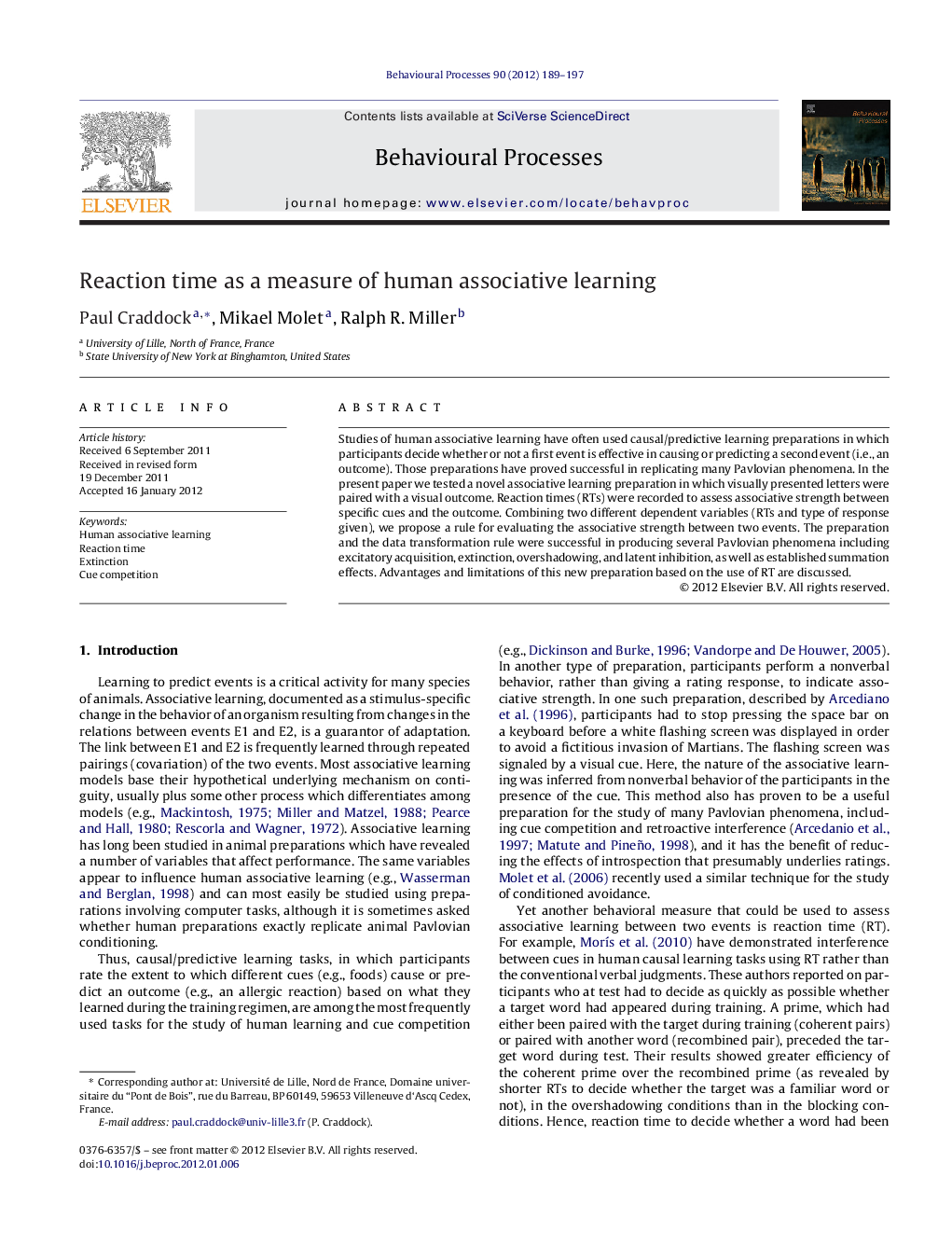| Article ID | Journal | Published Year | Pages | File Type |
|---|---|---|---|---|
| 2427025 | Behavioural Processes | 2012 | 9 Pages |
Studies of human associative learning have often used causal/predictive learning preparations in which participants decide whether or not a first event is effective in causing or predicting a second event (i.e., an outcome). Those preparations have proved successful in replicating many Pavlovian phenomena. In the present paper we tested a novel associative learning preparation in which visually presented letters were paired with a visual outcome. Reaction times (RTs) were recorded to assess associative strength between specific cues and the outcome. Combining two different dependent variables (RTs and type of response given), we propose a rule for evaluating the associative strength between two events. The preparation and the data transformation rule were successful in producing several Pavlovian phenomena including excitatory acquisition, extinction, overshadowing, and latent inhibition, as well as established summation effects. Advantages and limitations of this new preparation based on the use of RT are discussed.
► We tested participants on different well-known Pavlovian conditions. ► Participants pressed ‘yes’ or ‘no’ to indicate if a cue predicted a specific outcome. ► RTs and type of response were transformed into a single monotonic scale. ► Transformed data replicated observations from the Pavlovian literature.
